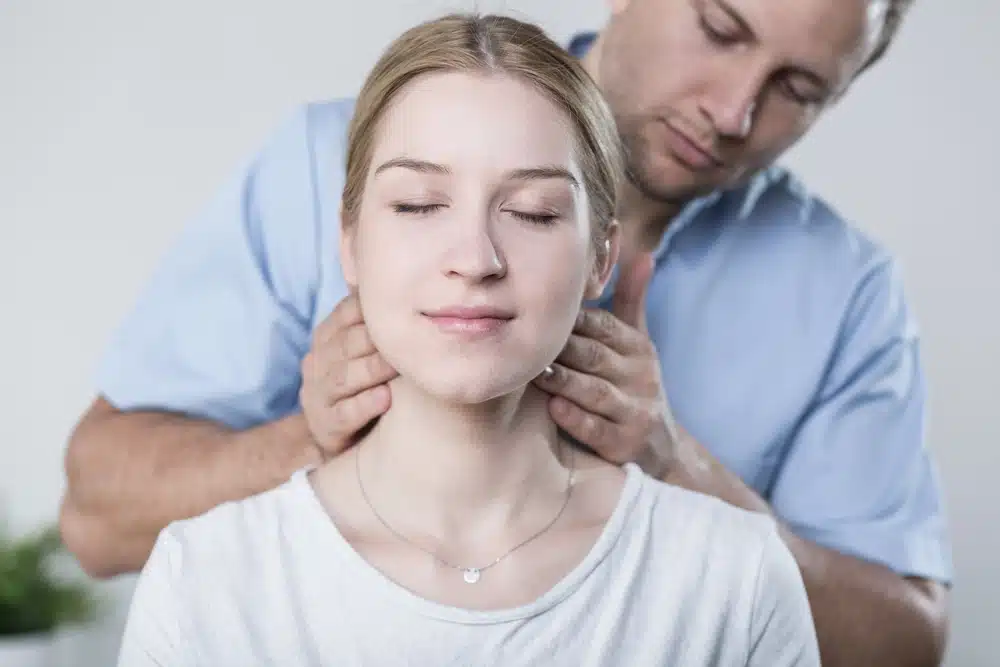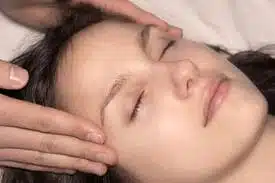There can be many contributory elements in the development of temporomandibular joint pain (TMJ). These can range from a misaligned bite, stress from clenching or grinding, to trauma — such as might result from an automobile accident, a blow to the head, or a fall. To this degree, spinal mis-alignments can also cause jaw-joint symptoms. TMJ pain may even be the result of bacterial infections. Each cause requires the appropriate solution. The following article written by a Minneapolis-based chiropractor highlights those aspects of the disorder that may benefit from chiropractic care.
By Dr. Passig
Back and neck pains are not the only the concern of chiropractors. There are other disorders that they deal with and one of these is temporomandibular joint disorder.
Temporomandibular joint disorder is characterized by distress or pain in the jaw muscles and joints. Some experience it briefly while a few experience interminable symptoms.
Following are the signs of Temporomandibular Joint Disorder
- Soreness that extends to the face, neck and shoulders.
- Limited jaw movements.
- Grating sounds when opening and closing the mouth.
- Dizziness, headaches, ear pain and hearing difficulties and eating and drinking difficulties.
TMJ disorder is categorized as follows:
- Tenderness of the jaw, neck and shoulder muscles known as myofascial tenderness.
- Dislocated jaw or disc.
- Weakening joint condition like rheumatoid arthritis or osteoarthritis.
The reasons or origins of TMJ
- Physical stress. TMJ is more prominent among women than men because of their fondness for high-heeled shoes. Long hours of sitting also lead to the development of TMJ. Both of these situations affect one’s posture.
- Emotional stress. Most people who are undergoing emotional stress have the tendency to clench their teeth.
- TMJ can also result from injuries such as receiving a blow on the jaw, one-sided chewing and gum chewing.
To evaluate the existence of temporomandibular disorder, the chiropractor puts his 3 fingers inside the patient’s mouth and asks him to bit on his fingers. The patient is also requested to open and close his mouth and to chew continuously. By doing this, the chiropractor will be able to assess the dimensions of the patient’s joints as well as the steadiness of his jaw muscles. An MRI of the jaw will be requested if no difficulty was seen in the aforementioned procedure.
- Patient will be taught the proper way of using cold and hot compress.
- He will also be taught how to massage the jaw joints and to do specific exercises.
- Patient will likewise be advised to refrain from doing hard jaw movements like grinding on meat or chomping an apple.
- If the patient did not respond to the aforementioned management, he will be asked to see a dentist or orthodontist to undergo dental surgery or intervention. This is because the temporomandibular joint disorder may be caused by a poor set of teeth.
Take time to visit a chiropractor should you feel any hardening on your jaw muscles that are brief or constantly occurring. Remember, it is always better to treat a forthcoming disease in its early stage than letting it get worst.
Looking for a chiropractor? Please visit our office for chiropractor Minneapolis Google Map: chiropractor Minneapolis.






